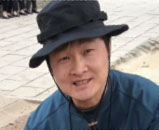동북아역사재단 2013년 08월호 뉴스레터
- Written by Jung Eun-hoon, History Teacher of Anbeop High School (in Anseong, Gyeonggi Province)
 Jung Eun-hoon,
Jung Eun-hoon,History Teacher of Anbeop
High School (in Anseong,
Gyeonggi Province)
I had been teaching history for over two decades until 'East Asian History' was added to the curriculum. All history teachers in charge of East Asian History grapple with the challenge of figuring out how they should teach 'Japanese history' and 'what perspective' they should adopt in teaching this class. Despite my experience in teaching various history classes (e.g. national history, world history, Korean modern and contemporary history) for twenty years without difficulty, I found it very difficult to teach East Asian history, especially Japanese history, a subject that I didn't have an opportunity to study in detail, whether high school, college, or graduate school.
Japan may be close to Korea geographically, but there is an emotionally remote distance between the two countries; Koreans haven't learned Japanese history properly. We teachers are not familiar with the subject, and obviously neither are our students. No wonder that teaching East Asian History was hard. When I found out that the Northeast Asian History Foundation was running the 12th 'History Academy' (May 9 to June 27), I decided to sign up in the hope that it might help my teaching of East Asian History.
The Academy proved to be very helpful to me because of the many lectures on introduction to Japanese history. It allowed me to connect the dots of Japanese history in my memory, and gave me a clear idea as to how I should teach my East Asian History class.
China and Japan, though we Koreans may feel emotionally distant to them, are still important neighbors we cannot simply ignore. The wisdom of learning how to live together applies to relationship among nations as well as people. The Academy helped me realize that the history of East Asian countries, distant yet close, is also our history, and it is also a means by which I consider the future of my life. This is what I will keep in mind when teaching the East Asian History class.
The Academy program also included a field trip to historical sites in downtown Seoul where modern Korean history had unfolded. It gave me the chance to think about historical perspectives that had escaped me.
For example, when we visited the Dong-a Ilbo and the Chosun Ilbo, newspaper companies established in a tumultuous time in Korean history, I heard about 'change and treachery,' the kind of information hard to find elsewhere. And our visit to Kyungwoon Palace (Deoksu Palace) and looked around Seokjojeon, the place where the first and second US-Soviet Joint Committees had been held during the late years of the Korean Empire, was a meaningful experience as it allowed me to think about division and unification.
The field trip also included visits to Chungdong Church, the first Protestant church in Korea, where we learned about the influence of Christianity on our country from the late years of the Korean Empire, the site of the old Russian legation, where we were given a lecture about the relationship between the Korean Empire and Russia, and finally Gyeonggyojang, patriot Kim Gu's personal residence, where we learned about episodes involving him and the place. Overall, it was a short but good field trip that gave me a lot of food for thought. "The people who forget their history have no future," said the late Danjae Shin Chae-ho. China's 'Northeast Project' and Japan's 'provocation over Dokdo' have promoted the Korean media to keep stressing that history education should be strengthened. However, the way I see it as a school teacher with a 20-year career, history education in Korea seems to be moving in the opposite direction.
I had a chance to talk with a local Chinese high school teacher during the NAHF-sponsored field trip for East Asian History teachers (February 2013). He told me that History took up about 20% of all the subjects tested in China's official college entrance exams (高考, gaokao) and it was a required subject in both humanities and science tracks, and that humanities students were required to select and take an additional advanced course of history. In contrast with China with the national policy of placing such emphasis on teaching their own national history, Korea removed National History from the list of required subjects and made it an elective in the 7th Revised Curriculum. (In the 7th Revised Curriculum, National History was renamed Korean History, and restored on the list of required subjects in 2012 after facing strong criticism from the public). But Korean History is not even a required subject to take in the college entrance exams, except at Seoul National University. Naturally, most high school students in Korea, other than those in top class applying for SNU, stop studying Korean History after their first year. To make things worse, Korean Modern and Contemporary History, a subject that many students selected with interest, was abolished in 2012. The continuing decline of the number of students selecting Korean History year after year is an example illustrating the increasingly weakening history education in Korea.
Looking on the bright side, I was pleasantly surprised on my first day at the History Academy by the presence of many senior citizens, high school students, and college students in the classroom. The enthusiasm of the instructors and staff who prepared and conducted the field trip in the heat of early summer, and the passion of many students who took off their Saturday to attend the Academy was palpable. I saw a glimpse of hope in those senior citizens, high school students, and college students who voluntarily attended the History Academy with interest to learn and experience the dynamic history rather than for job-related reasons.


